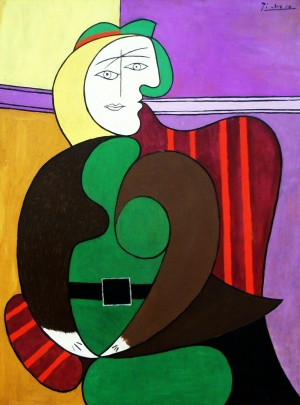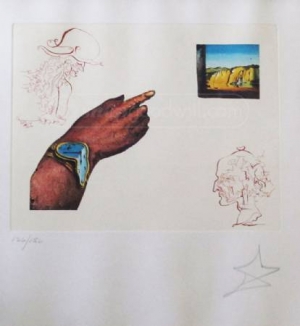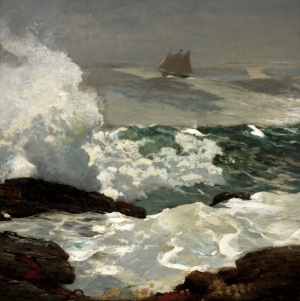|
Displaying items by tag: etching
Few media lend themselves to analysis of the meandering path an artist takes to arrive at a mystical “finished product.” Where can we find the abortive beard of a clean-shaven sculpture? What becomes of an empty field after its painter decides to dot it with sheep? Even the sketches that give birth to works are more blueprint than unfinished building; they can reveal intention, but the genealogical leap between plan and product can be fuzzy.
Etching and engraving, however, allow an artist to create unlimited prints from a single plate, and even to create prints at various times during the plate’s life. This process can provide a window into the evolution of a single plate and, in turn, of an artist’s vision.
Two treasured pieces of art — an etching by Rembrandt and an engraving by Albrecht Dürer — have gone missing from the Boston Public Library’s vaunted print collection, and investigators are probing whether the artwork was stolen through an inside job, the Herald has learned.
The library reported both pieces missing to police on April 29, after a BPL supervisor discovered they had gone missing on or around April 8, according to a police report obtained by the Herald.
The Guggenheim Museum presents Kandinsky Before Abstraction, 1901–1911 in the museum’s Kandinsky Gallery on Annex Level 3. The exhibition features an intimate presentation of sixteen early paintings and woodcuts by Vasily Kandinsky (b. 1866, Moscow; d. 1944, Neuilly-sur-Seine, France), highlighting pictorial themes that preceded the artist’s known nonobjective style.
This exhibition is organized by Tracey Bashkoff, Senior Curator, Collections and Exhibitions, and Megan Fontanella, Associate Curator, Collections and Provenance.
Kandinsky launched his artistic career in 1895, abandoning a legal profession to become the art director of a printing firm in Moscow. One year later Kandinsky left for Munich, where he formed associations with the city’s leading avant-garde groups, realized his talent for working with three classic printmaking techniques (etching, lithography, and woodcut), and began to evolve as an artist and theoretician.
Their Degas is de-gone.
Two Manhattan art dealers are suing an art seller they say is responsible for losing their $3 million Degas sculpture.
In papers filed in Manhattan Federal Court, the Degas Sculpture Project and Modernism Fine Art say they struck a deal with Rose Ramey Long to sell an Edgar Degas sculpture called “The Little 14-Year-Old Dancer” earlier this year.
Long had told the businesses she was buying the works on behalf of a reputable collector who wanted to purchase it and other works they had, including paintings by Willem de Kooning and etchings by Picasso, for a total of $11 million, the suit says.

A house painter from Pennsylvania is accused of stealing six paintings, including an etching by Pablo Picasso (1881-1973), from an estate in Long Island, NY. Joselito Vega, who was caught on camera during a sting operation, was hired in 2011 to fix flood damage to the house of renowned art collectors Hannelore and Rudolph Schulhof. The couple’s 350-piece collection includes works by Jasper Johns (b. 1930), Mark Rothko (1903-1970), and Picasso.
Officials launched their investigation of Vega after Hannelore Schulhof’s death in 2012. A subsequent inventory of the Schulhof’s collection revealed that three paintings were missing. Among the missing works were Jean Dubuffet’s (1901-1985) Le Fauteuil II, which is said to be worth $50,000, Frank Stella’s (b. 1936) Tuftonboro, and Norman Lewis’ (1909-1979) Flower. Officials were able to track the Dubuffet painting to a gallery in Oakland, CA, which brokered the sale of the painting to a buyer for $8,500.
Officials arrested Vega after a sting operation last week during which he attempted to steal three more works from the Schulhof’s home including the Picasso etching, Three Graces II, which is valued at $100,000. He also made off with Dubuffet’s Chien and Yaacov Agam’s (b. 1928) Presence de Rhythmes.
Vega was indicted on charges of money laundering, identity theft, and grand larceny. He is currently being held on $1 million bail and faces up to 11 years in prison. He faces an additional grand larceny charge in Nassau County, which could add another 15 years in prison to his sentence.

In 1913, the Art Institute of Chicago became the first American art museum to present the work of the young Spanish artist, Pablo Picasso (1881-1973). One hundred years later, the museum is celebrating its important relationship with the artist with the exhibition Picasso and Chicago.
Picasso and Chicago features 250 works by the artist who went on to become one of the defining figures in 20th century art. Paintings, sculptures, prints, drawings, and ceramics from the museum’s holdings as well as private collections in the city will be on view. This is the first comprehensive Picasso exhibition organized by the Art Institute in nearly 30 years.
The Art Institute of Chicago began collecting works by Picasso after the seminal 1913 Armory Show, which revolutionized American modern art. Works on view from the museum’s collection include The Old Guitarist (1903-04), Mother and Child (1921), Red Armchair (1931), and the sculpture Cubist Head of a Woman (Fernande) (1909). The exhibit also features impressions of The Frugal Meal (1904), one of only three examples in the world of the well-known Blue Period etching actually printed in blue ink.
Picasso and Chicago will be on view through May 12, 2013.

New York’s Metropolitan Museum of Art, the largest art museum in the United States, can be difficult to navigate in a short period time. With over two million works in its collection, visitors to the Met usually spend a few minutes with an object before moving on to one of the many masterpieces that awaits them. In an effort to highlight some of the museum’s not-to-be-missed objects, Met officials have launched the web series, 82nd & Fifth, aptly named after the museum’s Manhattan location.
The series presents 100 pieces from the Met’s vast collection in separate episodes. During each episode, a museum curator explains the work’s significance, not just to the art world and the museum, but also to them on a personal level.
The Met has already posted six 2-½ to 3-minute videos, which include interactive features, on the 82nd & Fifth web page. Highlighted works include a room with furnishings designed by Frank Lloyd Wright (1867-1959) between 1912 and 1915, a Renaissance relief sculpture by Antonio Rossellino (1427-circa 1478/1481), Giovanni Battista Tiepolo’s (1696-1770) massive painting The Triumph of Marius (1729), and an etching by Rembrandt (1606-1669) titled Christ Crucified Between Two Thieves: The Three Crosses (1653).
The Met will post two new videos on Wednesday morning of each week through December 25, 2013.

When the Crystal Bridges Museum of American Art opened its doors for the first time in Bentonville, Arkansas on November 11, 2011, the institution presented about 450 works of art, nearly half of its entire holdings. A little over a year later, the Crystal Bridges’ collection has ballooned and now includes over 2,000 artworks thanks to an active acquisition program led by Executive Director Don Bacigalupi, museum curators, and a solid leadership board. Within the past year, the Crystal Bridges Museum has acquired five sculptures, eight paintings, one mixed media work, 468 prints, and 504 works on paper, including photographs, drawings, and watercolors.
Museum officials were particularly excited to acquire a large painting by Abstract Expressionist artist, Mark Rothko, titled No. 210/No.2011 (Orange) (1960) and held an official unveiling back in October. The piece, which has only been exhibited twice in public, is currently part of the museum’s temporary exhibition, See the Light: The Luminist Tradition in American Art. After the show closes in late January, the Rothko work will be moved to the museum’s Twentieth-Century Art Gallery.
Other major acquisition include a portrait by American folk artist Ammi Phillips (1788-1865), titled Woman in Black Ruffled Dress (circa 1835); a neoclassical white marble sculpture completed in 1867 by William Wetmore Story (1819-1895); a contemporary mixed-media work from the early 1980s by Californian artist Miriam Schapiro (b. 1923); and a large painting titled Tobacco Sorters (1942-44) by the twentieth-century American artist, Thomas Hart Benton (1889-1975), which was commissioned by the American Tobacco Company.
A private collector who specialized in early twentieth-century works facilitated the major growth in the museum’s print department. The recent acquisitions vary in style from Benton’s Regionalism to Charles Sheeler’s (1883-1965) Precisionism and include drypoints, etchings, engravings, lithographs, screenprints, woodcuts, and wood engravings. A selection of recently acquired prints will be part of the temporary exhibition Art Under Pressure: Early Twentieth Century American Prints, which will be on view from December 21 through April 22, 2013.

During the holiday season donations to Goodwill start pouring in; one location in Federal Way, Washington got more than they bargained for this year. A signed etching by the pioneering Surrealist artist, Salvador Dali, was dropped off by an anonymous donor and quickly identified by employee, Shea Munroe. The piece was added to Goodwill’s online auction system for a mere $999 and the price has continued to soar. It is currently listed on the organization’s auction site at $18,525. The auction ends tonight, November 19, at 7:30 p.m. PST.
Authenticated by Period House Appraisal Service in Tacoma, the framed color etching titled, Reflections, is from the artist’s The Cycles of Life Suite and features one of Dali’s famous melting watches. Signed and numbered “126/150,” the piece is also labeled as an “etching and photolithography from collage.” Although the work’s paper is slightly warped due to humidity and there is some discoloration to one part of the matting and a few scratches and scuffs to the glass and frame, the etching will undoubtedly sell for an impressive price.
Goodwill trains their employees to look for potentially high-value items and asks that they put aside any signed items or pieces with paperwork attached. Other valuable items that have appeared on the Goodwill auction site are a Rolex watch that sold for $900, a diamond ring that reached $12,000, and a Frank Weston Benson watercolor that fetched $165,002 in 2006, the most valuable piece to sell online to date.

Best known for his dynamic and powerful seascapes, painter Winslow Homer (1836–1910) spent the last twenty-seven years of his life working diligently in a studio in Prout’s Neck, Maine. It was here, isolated on the craggy coast, that Winslow’s work matured and he created some of his most admired paintings. While in Maine, Homer became fascinated with the untold power of the natural world and often explored the theme in scenes of man versus nature, particularly the ocean.
Beginning September 25th, after a multi-year, $2.8 million restoration by the Portland Museum of Art, Homer’s studio will be open for public tours. After Homer’s death, the studio was passed down from family member to family member and ultimately landed in the hands of his great-grandnephew, Charles “Chip” Homer Willauer. Willauer, now 74, spent many summers living in his great-granduncle’s studio and began to worry about the future of the building. Hoping to preserve the significant piece of American art history, Willauer sold the studio to the Portland Museum of Art in 2006 for $1.8 million.
The Museum took the undertaking very seriously and went to work on renovations. The foundation was stabilized, the balcony and windows were replaced, the chimney was restored, and the exterior returned to its original green hue with brown trim. The museum ultimately raised $10.6 million to pay for the purchase and renovation of Homer’s studio as well as an endowment and educational programs and exhibitions.
To celebrate the renovation and opening, the museum will present the exhibition “Weatherbeaten: Winslow Homer and Maine,” featuring 38 oil paintings, watercolors and etchings that Homer created in his secluded studio. “Weatherbeaten” will run through December 30th.
|
|
|
|
|